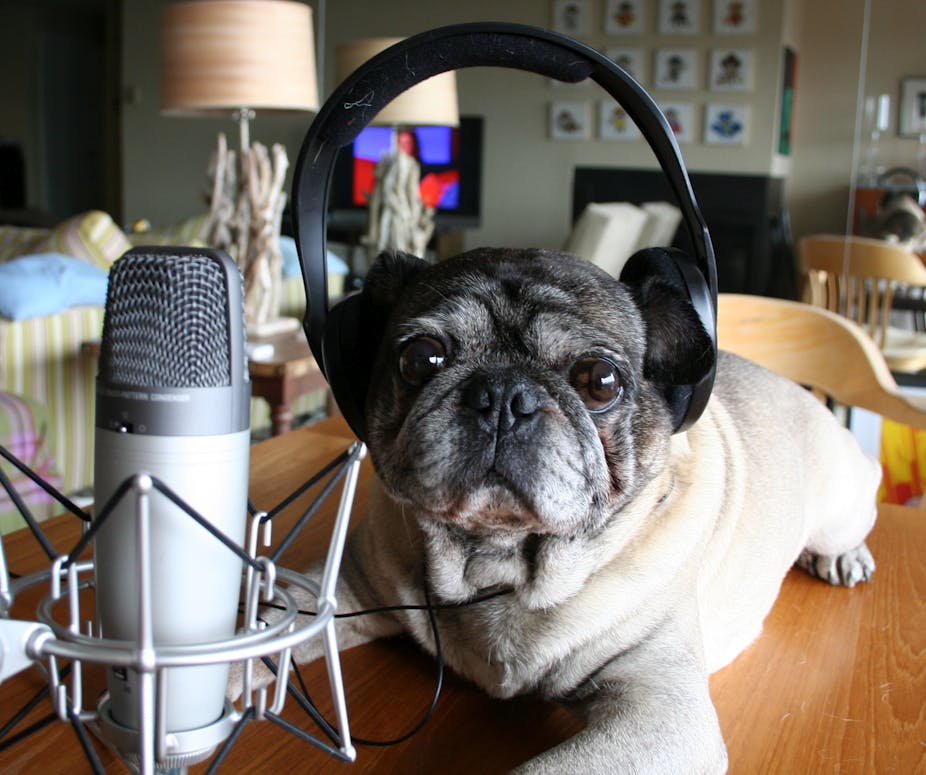ABC Radio National’s new Creative Audio Unit (CAU) launches on Sunday, with two new shows – [Radiotonic](http://www.abc.net.au/radionational/programs/radiotonic/](http://www.abc.net.au/radionational/programs/radiotonic/ ) and Soundproof – presenting a mix of fiction and non-fiction, essays, radio dramas, soundscapes, composed audio features and radio art.
So how does this fit in with the broader context of radio and the medium’s prospects?
The formation of the CAU was announced in 2012 at a time when a number of controversial cuts were being made to arts programming at RN. Its remit is to carve out a new space for creative audio work across genres, media and forms, and in service of this, a large portion of the CAU budget is allocated for commissioning new works from artists, writers, musicians and radiomakers in Australia and internationally.
It will also approach institutions such as museums, festivals, theatres and galleries to further explore the ways in which radio is made and what constitutes material for radio.
Around the world, radio is enjoying a renaissance. Creative forms of radio production, radio features and audio storytelling have become sexy and, unlike some naysayers have claimed, neither video nor new media killed the radio star.
Rather, radio, always the most versatile of media, has reinvented itself to take advantage of what digital technology has to offer. Audio content is no longer ephemeral but can now be accessed, captured, preserved, reshaped and shared with audiences through a variety of platforms.
This reinvention can be illustrated in three ways:
1) The audience is listening more than ever
2) More people want to produce creative radio content
3) The body of academic work in radio studies is growing
Listening more than ever
Audience research shows the listeners are there. The UK’s Radio 4 produced record figures for the last quarter of 2013 with a weekly reach of 11.2 million listeners, up from 10.9 million in the same period in 2012. These are the highest figures since 1999, and lead BBC director of radio Helen Boaden to remark that:
despite the ever-increasing competition for people’s time and the growing range of online audio providers, radio is thriving in the digital age.
Audiences are also listening across markets. In Australia, a 2013 Citi Research report states that the commercial radio market is “enjoying renewed interest” with increasing advertising revenue and that the radio industry is in “a period of renaissance”.
More people want to make radio
In an interview last year, Claudia Taranto, Executive Producer for the flagship ABC Radio National documentary program 360Documentaries described how five years ago she received an average of one story proposal a week from freelancers. Now she gets one a day.
Additionally, numerous new podcasts are being created and coming online. In the US, PRX’s new Radiotopia podcast network is described as a “collective of the best story-driven shows on the planet … a new model for audience engagement and revenue growth in public radio”.
The network brings together a range of dynamic, creative podcasts – such as Roman Mars’ 99% Invisible, Radio Diaries, and Benjamin Walker’s Theory of Everything – under one umbrella, and is rapidly expanding the number of podcasts on offer and the audience for creative audio documentaries.
Academic interest
The third sign of radio’s comeback is the marked increase of academic work in the field. The academic journal Australian Journalism Review is dedicating a special issue to radio this year. The first issue of the innovative Australian open-access journal RadioDoc Review was recently published and has been well-received by international scholars and radio practitioners alike.
RadioDoc Review aims to build and sustain a new radio documentary literacy, and will preserve the canon of works it critiques, with metadata at the National Film and Sound Archive, Australia.
‘Western Sydney Sonic Sacred’ by Sherre Delys. A sonic exploration of non-traditional sacred spaces in Western Sydney created for the CAU.
Why does radio endure?
Radio scholars have described the radio medium as blind, invisible, ephemeral and conversational – and therefore less mediated than other media. Listening is generally secondary to other activities, and as such radio is often taken for granted, but radio can create an intimacy unparallelled by other media.
But through the dimensions of sound and power of voice, radio creates an intimacy unparallelled by other media. Its ability to remain flexible in form and relevant in topic, coupled with the ease of distribution through technology, ensures it will continue to thrive in a fragmented media environment.
Radio literacy is increasing and audiences are eager to hear more innovative sounds and stories. The establishment of the CAU is the next stage of Radio National’s long legacy and commitment to exploring the possibilities of radio. And importantly, it’s a response to the growing international audience for creative audio content.
Building on its long and illustrious history, the future of radio is exciting, unknown and alive with sound.
This article was co-authored by Miyuki Jokiranta, a presenter and producer with the new Create Audio Unit at ABC Radio National.

